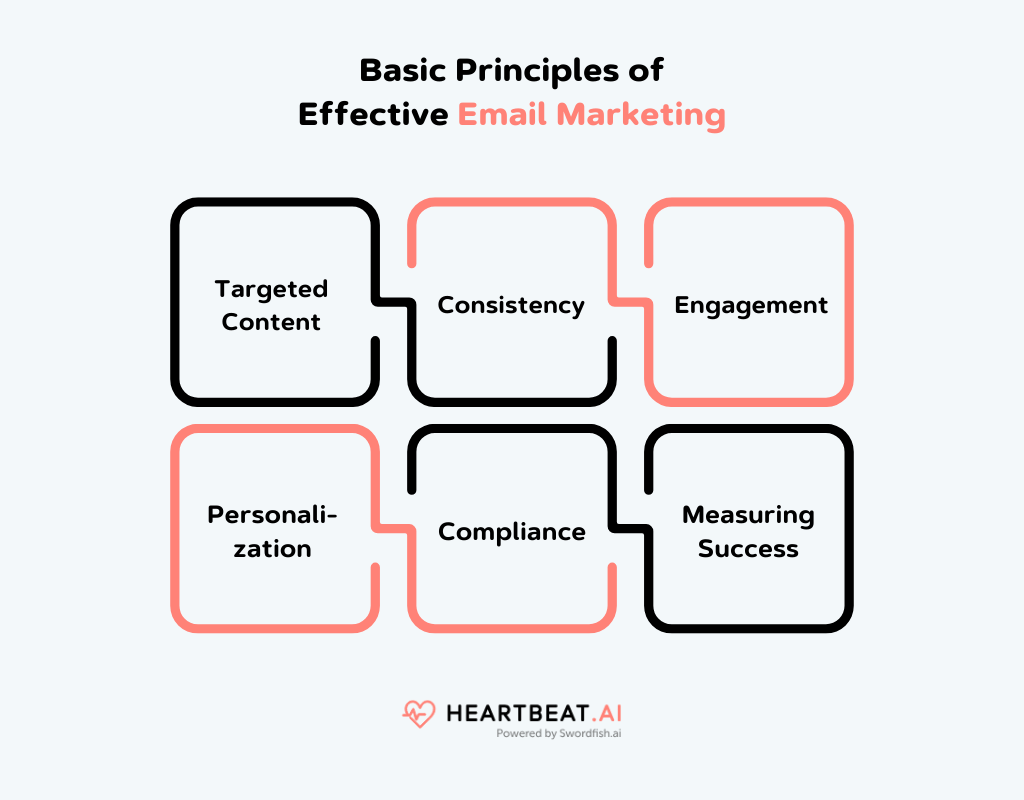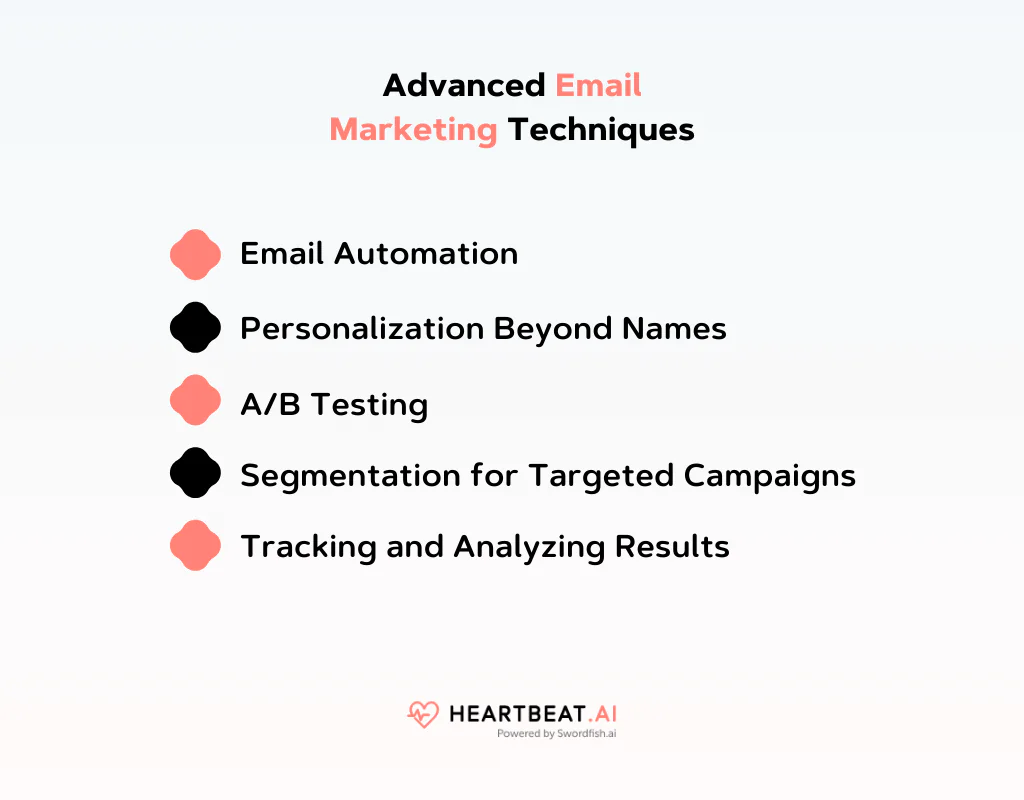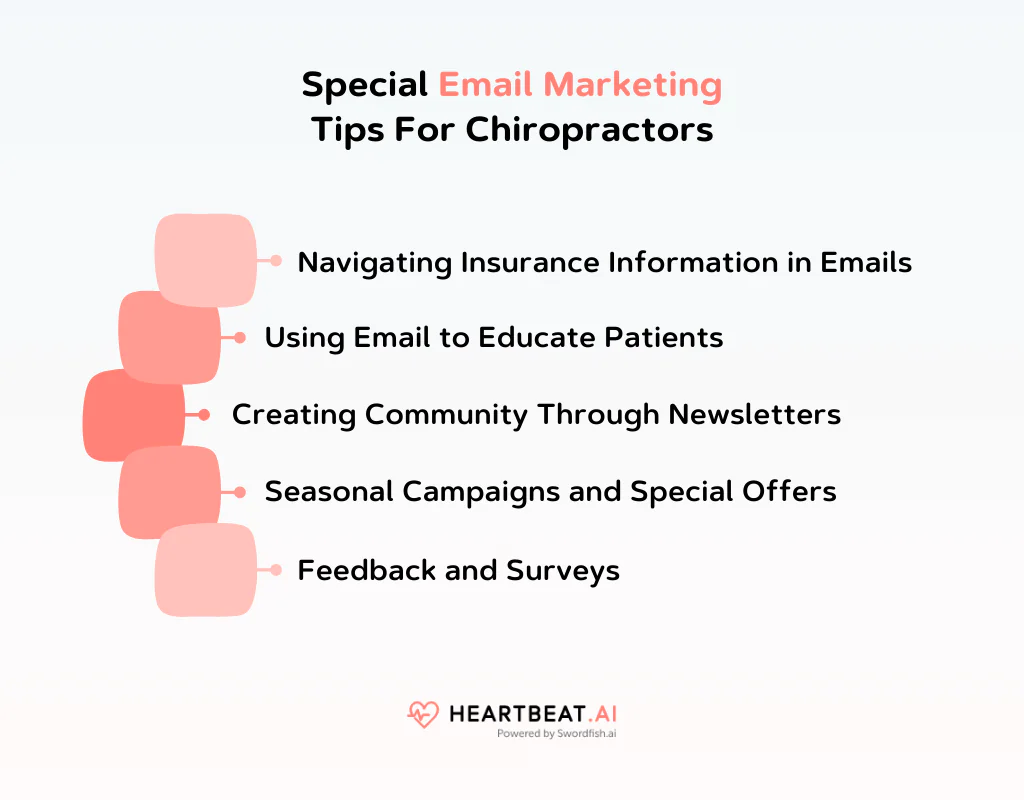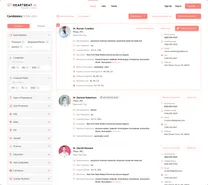
Do you know? More than 35 million people in the US see chiropractors every year. That’s about 10% of all Americans, including both grown-ups and kids. Plus, the US chiropractic field is worth a huge $19.5 billion! With so many people using chiropractic services, email marketing offers a powerful way for chiropractors to connect with their patients and grow their practices.
In this guide, we will walk you through the steps to master email marketing for chiropractors. From building an email list to crafting messages that patients want to read, we’ve got it all covered.
What’s on this page:
The Basics of Email Marketing for Chiropractors
Let’s start with the basics. Email marketing is a super tool for chiropractors. It’s all about using emails to talk to your patients and get new ones. Here’s why it’s so important and some simple rules to make it work great.
The Importance of Email Marketing for Chiropractic Practices
Email marketing has become a key tool for chiropractors. With over 35 million people visiting chiropractors annually in the US, staying connected with your patients and potential clients is crucial.
Email marketing allows chiropractors to maintain this connection, offering a direct and personal way to communicate. Whether it’s sharing health tips, announcing new services, or providing updates, you can reach a large audience with minimal effort.
This approach not only helps in retaining existing patients but also in attracting new ones, ultimately contributing to the growth and sustainability of your practice in a highly competitive $19.5 billion industry.
Basic Principles of Effective Email Marketing
Effective email marketing is about more than just sending out emails. It involves several key principles:

- Targeted Content: Customize your emails to meet the specific needs and interests of your audience. This could be information about chiropractic treatments, wellness tips, or updates about your practice.
- Consistency: Regular communication is key. Whether it’s a weekly newsletter or monthly health tips, keeping a consistent schedule helps keep your practice at the forefront of your patients’ minds.
- Engagement: Your emails should engage your readers. This could be through compelling stories, informative content, or interactive elements like surveys.
- Personalization: Addressing patients by name and segmenting your email list can make your emails more personal and relevant. This approach increases the chances of your emails being read and acted upon.
- Compliance: Ensure your email marketing practices comply with laws like the CAN-SPAM Act, which sets rules for commercial email.
- Measuring Success: Use tools to track open rates, click-through rates, and other metrics to understand how your emails are performing and where improvements can be made.
Developing Your Strategy
Now, let’s talk about making your email strategy even better. A big part of this is building a good list of people to email and knowing how to talk to different groups in that list. Here’s how you can do it in a smart way.

- Ask During Visits: When patients visit, ask if they want to get emails from you. It’s a simple way to get more contacts.
- Online Sign-ups: Put a sign-up form on your website or social media. Make it easy to find and quick to fill.
- Offer Something Good: Give them a reason to sign up, like a free health guide or a discount on their next visit.
- Get Permission: Always make sure people agree to receive your emails. It’s not just nice, it’s the law.
- Be Clear About Unsubscribing: Tell them how they can stop getting your emails in every message you send.
- Divide Your List: Split your email list into groups like new patients, regulars, or those interested in specific treatments.
- Personal Touch: Send information that fits each group. Like exercise tips for sports injuries or wellness advice for regulars.
- Ask and Learn: Use surveys or notice what patients ask about. This helps you understand what different patients are interested in.
- Personalize Your Content: If some patients are into wellness, send them wellness tips. For those with back pain, focus on back care.
Crafting Your Emails
Alright, now let’s focus on making those emails. A good email is like a friendly chat that looks nice and shares cool stuff. It’s about mixing smart chiropractic ideas with a design that catches the eye. And, of course, writing in a way that keeps people reading. Let’s break it down.
Designing Your Email Campaigns
In designing your email campaigns, the key is to merge interesting chiropractic content with a visually appealing layout. Focus on topics your patients care about, like back health tips or clinic news.
Use real success stories for a personal touch. For design, aim for a clean and simple look that’s easy to read, especially on mobile devices. Include images or short videos for added engagement.
Writing Effective Email Content
When writing your emails, start with something engaging, like a fun fact or a short story. Keep the language simple and the content relevant to your patients’ interests, such as health tips or updates about your clinic.
Use different types of emails – a welcoming email for new subscribers, informative emails offering health advice, and updates about your clinic or special offers. The goal is to make each email informative and reflective of your practice’s care and professionalism.
Advanced Email Marketing Techniques
Now we move into the more advanced side of email marketing. Here, we’ll explore some smart techniques that can really boost your email strategy and make your chiropractic practice stand out.

Email Automation
Automation means setting up emails to send on their own based on certain actions. For example, when someone new signs up, they automatically get a welcome email. Or, if someone hasn’t visited in a while, they get a ‘we miss you’ email. This saves you time and keeps your communication consistent.
Personalization Beyond Names
It’s more than just adding a name to an email. Think about sending specific content based on what each patient likes or needs. If someone often books massages, send them tips on relaxing at home. This makes your emails more relevant and interesting to each patient.
A/B Testing
This is like an experiment to see what works best. You send two versions of the same email to different people and see which one gets more opens or clicks. Maybe one email has a different subject line or a new layout. This helps you understand what your patients prefer.
Segmentation for Targeted Campaigns
Segmentation is about dividing your email list into groups. You might have one group interested in sports chiropractic and another in general wellness. Send targeted information to each group. This way, you’re talking about things they really care about, which can lead to better engagement.
Tracking and Analyzing Results
After you send emails, look at how they did. How many people opened them? Did they click on anything? This info helps you make better emails in the future. It’s like learning from what your patients like and don’t like, so you can always improve.
Special Email Marketing Tips for Chiropractors
We’re diving into some special topics in email marketing that are particularly relevant for chiropractors. These areas will help you personalize your email strategy to the unique aspects of your practice and patient needs.

Navigating Insurance Information in Emails
When you talk about insurance in your emails, make it easy to understand. Explain what services are covered, like chiropractic massages, and any key details. You could even answer common insurance questions. This shows your patients that you’re there to help, not just with their health but also with the tricky stuff like insurance.
Using Email to Educate Patients
Emails are a great way to share knowledge. Teach your patients about chiropractic care and its benefits. You could include tips for maintaining good posture or explain how regular chiropractic visits can improve overall health. Educated patients are more likely to engage with your services and understand the value of what you offer.
Creating Community Through Newsletters
Think about sending a monthly newsletter. This can be a mix of clinic news, health tips, and community events. It’s a great way to build a community feeling. Show photos from your clinic, introduce new staff, or celebrate patient successes. Newsletters make patients feel like they’re part of something bigger, not just clients.
Seasonal Campaigns and Special Offers
Use different times of the year to send themed emails. For example, offer a winter wellness check or a summer spine care special. These campaigns can match the season’s needs and give patients a reason to book an appointment. Special offers or discounts can also encourage new and existing patients to try different services.
Feedback and Surveys
Sometimes, the best way to improve is to ask what your patients think. Send out a survey asking for feedback on your clinic, the services, or what they want to see in your emails. This shows that you value their opinion and helps you tailor your practice and emails to better meet their needs.
Putting It All Together
It’s time to bring all these pieces together. Here, we’ll see how to combine everything we’ve learned into a solid, effective email marketing plan for your chiropractic practice.
Developing a Consistent Email Schedule
Decide how often to send emails. It could be weekly, bi-weekly, or monthly. Stick to your schedule so patients know when to expect your emails. This regularity keeps your practice in their minds and helps build a steady relationship.
Balancing Different Types of Content
Mix different kinds of emails. Some can be educational, others about clinic updates, and a few promotional ones. This variety keeps things interesting for your patients. Remember, not every email has to sell something. Some can just share useful info or news.
Incorporating Seasonal and Event-Based Emails
Plan for special emails around holidays or events like National Chiropractic Health Month. These can be fun or informative and offer a change of pace from your regular emails. They’re also a great opportunity to remind patients to book a check-up or try a new service.
Using Feedback to Refine Your Strategy
Look at how your emails are doing. Are people opening them? Clicking on links? Use this feedback to tweak your future emails. If something’s not working well, try a new approach. Listening to what your patients like helps make your emails better over time.
Staying Up-to-Date with Email Marketing Trends
Keep an eye on what’s new in email marketing. Things change fast in the digital world. Maybe there’s a new tool or a fresh way to connect with patients. Staying current means your email marketing won’t get stale.
Evaluating and Adjusting Your Plan
Every once in a while, step back and look at your overall email marketing plan. What’s working? What’s not? Maybe you need to update your email list or change how often you send emails. Regular check-ins like this keep your strategy strong and effective.
Conclusion
We’ve covered a lot about email marketing for chiropractors. Here’s a quick recap: Start with the basics and row a list of people who want to hear from you and talk to different groups in a way that makes sense for them.
Create emails that look good and share interesting, helpful info. Dive into more advanced stuff like automating your emails and checking how they’re doing. Finally, bring it all together with a solid plan and keep an eye on how things are going, always ready to make changes.
Apart from all these one final tip for you is you can reach other chiropractors for suggestions. Now to reach them effectively Heartbeat AI can help you by providing a database of chiropractors.
Frequently Asked Questions on Email Marketing for Chiropractors
How can chiropractors achieve results with email marketing?
To get good results with email marketing, chiropractors should focus on personalizing their emails, maintaining regular contact, and providing value through informative content. Using templates and examples tailored for chiropractic practices can guide the creation of effective campaigns.
How do chiropractors attract new patients through email marketing?
Attracting new patients can be done by creating engaging email content that highlights the benefits of chiropractic care. Offer a free initial consultation or a discounted service for new patients. Include testimonials from satisfied patients to build trust.
Does insurance cover the chiropractic massage mentioned services?
Many insurance plans do cover chiropractic care, but specifics can vary. Providing clear information in your emails can help patients understand their benefits and encourage them to book services.

